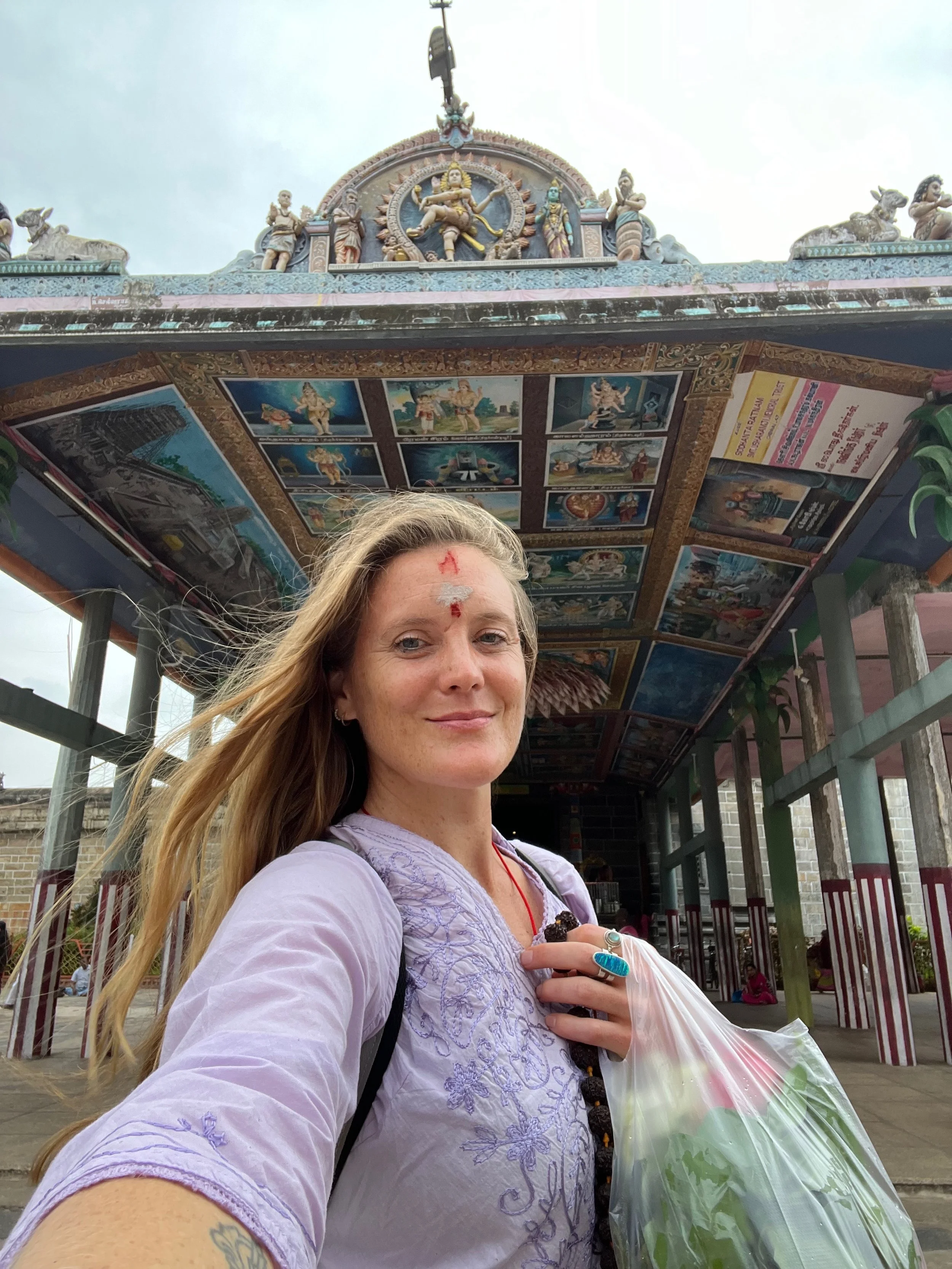Healing the World Crisis of Masculinity with Lord Shiva
Thillai Nataraja Temple, Chidambaram, Tamil Nadu, India
November 2024
There is a crisis of masculinity afflicting the leaders of the world today: their obsession with military toys, their devotion to the cult of brute force, their complicit insistence that “might makes right.”
Military activity explodes like state sanctioned temper tantrums. Power is asserted in the name of protection, feeding an insatiable hunger for dominance. Missiles are piled up and tossed down on innocent people in morally numbing rages of identity aggression.
Toxic masculinity is doing a striptease across the world stage in strobe lights.
And this version of the “powerful man” parading through the headlines only glorifies old imperial stereotypes: domination, control, aggression, conquest. It is an image of masculinity that serves no one, not us, not the planet, not even the men themselves.
But where do these images come from? What shapes our expectations of manhood and, relationally, our expectations of womanhood?
I have come to believe that our deepest blueprints are shaped by how we understand the divine. Who we love most, who we strive to feel loved by, determines how we show up in the world.
Our sense of ideal personhood, our sense of the source from which we come and to which we strive, whether called God, gods, parents, or archetypes, forms the stories, rituals, and values that guide us.
Do we picture our divine ideals as distant, threatening, punishing, and rigid? Or as intimate, alive, merciful, even playful?
For a long time, I did not realize I was missing a vision of divine masculinity that felt alive, relational, and inspiring, something beyond the distant father and self sacrificing son of my Christian upbringing. And with that absence, I was also missing a vision of divine femininity that was not reduced to the virgin mother, sinful temptress, or invisible daughter.
In the monotheistic Judeo-Christian context where I grew up, masculinity and femininity are often defined in relation to obedience, purity, and moral correctness, or in rebellion against them. Men are cast as authoritative and controlling, women as nurturing and virtuous when compliant, dangerous and transgressive when stepping outside their roles. Compassion, agency, and complexity are subordinated to rigid archetypes that offer a narrow map of human potential. Wars, missiles, and ego driven aggression are symptoms of this reductive framework.
Yet these patterns are not unique to Judeo-Christian culture. They exist globally. Even within traditions that honor the divine in both masculine and feminine forms, patriarchy casts shadows and drags chains.
Hinduism is not exempt from patriarchy. However, its philosophies and practices offer radically healing visions of masculinity and femininity, especially in Lord Shiva, who appears in many forms.
As Adiyogi, the primordial yogi, Shiva embodies introspection, restraint, and inner awareness, the foundation of true power. As Nataraja, the cosmic dancer, he reveals that our destiny is a dance, life and death are a perpetual play of creation, preservation, transformation, concealment, and revelation. As Ardhanarishvara, half man, half woman, he models the integration of masculine and feminine forces, the mother and father energy coexisting harmoniously in one being. In his fatherly role for Kartikeya and Ganesha, he demonstrates protection and guidance while still meeting us directly through his own presence, actions, and relational wisdom.
As the Lingam, often misunderstood as merely phallic, Shiva offers a profound reminder of primordial awareness: energy that is life affirming, balanced, and transformative. Power can generate rather than dominate. In his fierce aspects as Bhairava and Rudra, he calls on courage to confront shadow and channel anger when necessary. As Dakshinamurti, he teaches through silence, as Pashupati, Lord of the Animals, he exemplifies care and interconnectedness, and as Shankara, he radiates auspiciousness.
As the husband and lover of Parvati, one of the many forms of Shakti, Shiva shows that masculine energy finds its fullest expression not in isolation or extraction, but in dialogue and co-creation. True masculinity embraces femininity. The union of Shiva and Shakti reveals attunement and mutual receptivity.
As a yoga practitioner, I am very much a student of Shiva and Shakti, learning and connecting with this awareness, and I have already seen a tangible difference in the quality of my energy, presence, and activity.
On my last trip to India, I made a pilgrimage to each of the five sacred Pancha Bhuta Sthalam temples in Tamil Nadu and Andhra Pradesh, where Shiva is honored in each of the five great elements: Earth, Water, Fire, Air, and Space. In each of these ancient, living temples, Shiva is worshipped alongside Shakti and a community of divine representations, a dynamic, playful demonstration of masculinity balanced by femininity. Walking through these spaces, I felt a shift: the divine was less an abstract ideal and more a living, playful conversation, masculinity that is alive, generous, relational, flowing with femininity that is honored, visible, and integrated.
If you are drawn to explore this healing energy yourself, there are many ways to begin. Pilgrimage to India offers the most immersive experience, to feel the vast play of Shiva and Shakti through the rhythms of temple rituals, the movements and flavors of local culture, and the sonic landscapes of sacred chanting.
Wherever you are, though, simple practices of yoga, meditation, chanting Om and Om Namah Shivaya offer doorways into the balance of divine masculine and divine feminine energy in your daily dance.
Xo
Sandi
Om Namah Shivaya
This post was written in dialogue with ChatGPT AI.


